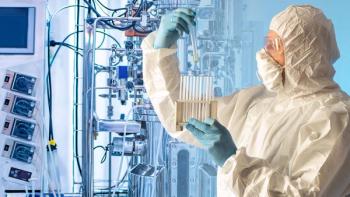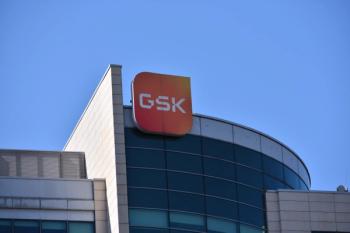
- BioPharm International-09-01-2020
- Volume 33
- Issue 9
Cellular and Gene Therapies Face a Manufacturing Capacity Crunch
Cellular and gene therapy fields are currently on track for, if not already experiencing, a serious capacity crunch.
Current cellular and gene therapies, those relatively few marketed and the hundreds in clinical development, primarily involve autologous manufacturing: making one product at a time individualized for each patient. This is clearly very resource intensive, often involving weeks of labor-intensive manual processing to make a single patient’s treatment.
The long-term trend is for development of allogeneic cellular and gene therapies, involving batched manufacturing of products to be used for treatment of multiple patients (1). Many, if not most, cellular therapies in development involve genetic modification of cells—therefore, are also gene therapies—with cellular therapy manufacturing closely intertwined with gene manufacturing therapy (the vectors used).
Compared to current cellular therapies, gene therapy manufacturing is in a better position. Nearly all current gene therapy involves use of viral vectors, particularly adeno-associated virus (AAV), with related vector manufacturing similar to that long used for viral vaccines and recombinant processing plasmids production. A few companies now report scaling-up allogeneic viral vector manufacture to 2000-L scale.
But with large amounts of vectors needed for each treatment, this upstream volume will only treat at most several dozen patients. Cellular therapies involve running lots of processes at small, usually one-off, desktop scales often along with gene therapy vector production, while gene therapies (those administered to patients) involve running a good number of processes at larger scales.
Capacity crunch expected
Multiple interview- and survey-based studies (1), clearly indicate cellular and gene therapy fields are currently on track for, if not already experiencing, a serious “capacity crunch.”There is potential for a significant shortage of manufacturing capacity—measured as total volume of bioreactors in use—particularly at commercial scales, similar to a decade or more ago when there was widespread expectation of a severe shortage of capacity for mainstream recombinant products. Luckily, industry then responded with many new facilities and expansions; some presumed blockbuster products did not turn out to be blockbusters; and evolving technology, including higher titers, helped.
The problems with cellular/gene therapies manufacturing capacity particularly affect contract manufacturing organizations (CMOs). BioPlan Associates studies have shown that approximately 90% of cellular/gene therapy developers would much prefer to use CMOs to manufacture their products. But related CMO capacity is simply not available. With lead times for CMOs to begin cellular or gene therapy projects now averaging 18 months and increasing, more developers are deciding, often forced, to perform manufacturing, particularly later-stage and commercial, in-house. Many CMOs are entering the field or expanding their cellular/gene therapies capacities. But the leading CMOs and developers alike are busy trying to catch-up with capacity needs to support early-mid clinical needs.
BioPlan estimates that there is currently a 500% shortage of cellular/gene therapy manufacturing capacity, in the sense that five times the current capacity would likely be used if it were available, particularly from CMOs. The shortage of capacity and long lead times with CMOs has resulted in many pharmaceutical companies slowing R&D or delaying entry into the field. Unless more staff and capacity are brought online, a greater capacity shortage is projected in five years. This shortage will occur as more products enter and advance in development, particularly as more advance to commercial manufacturing.
Total capacity among facilities known to be producing cellular/gene therapies, which is not always the only products manufactured, is approximately 330,000 L (2). This capacity is approximately 2.0% of the total 16.7 million L worldwide bioprocessing capacity and is spread among 180 facilities; about two-thirds of the facilities engaged in cellular/gene therapy production perform gene therapy viral vector manufacturing either as therapies or for cellular therapies modification. Average capacity data are skewed by inclusion of the current largest viral vector manufacturing facilities, with many cell therapy facilities at much smaller scales and not publicly reported. Most cellular therapies are still autologous nearly all have under 500 L capacity.
Survey results confirm problems
In terms of in-house bioprocessing expansions, most respondents of BioPlan Associates 17th annual survey expect large capacity increases (1). For example, of survey respondents with current relevant capacity, 44% expect their facility to increase capacity by more than 100% during the next five years (see Figure 1). This increase does not include expected new entrants and program expansions as more products enter the market, as investors finally see actual revenue from sales of these products.
Technology advancement is not expected to much help avert capacity problems. A minority (47.1%) of respondents agreed that “Within five years, platforms for cell and gene therapy manufacturing will have advanced to significantly reduce manufacturing capacity problems or bottlenecks.”Also, reflecting the primitive state of much cellular/gene therapies bioprocessing, only 16% each cited, “Our commercial manufacturing will or does use only closed systems, aseptic transfers/connections, etc.” and “Anticipate no problems with meeting good manufacturing practice (GMP) requirements.” One third (34%) of respondents report planning for GMP-compliant manufacturing of viral vectors/gene therapies this year, while 26% reported already attaining GMP, but with few yet planning for worldwide commercial manufacturing.
Problems addressing a capacity crunch
A decade ago, a capacity crunch would have affected nearly all biopharmaceutical facilities. Today, the industry is far more diverse. There are more classes of products, more single-use manufacturing, more flexible facilities and suites, more ability to scale-out commercial manufacturing, more options for continuous bioprocessing, etc. Further, with the focus on the COVID-19 pandemic and related product development, many companies that would otherwise be entering or expanding into cellular/gene therapies are not yet doing this, and governments are not expected to address cellular/gene therapies manufacturing shortfalls.
Even with near-term investments in new facilities and expansions, most facilities still need to catch-up to support current development needs, including building or contracting for capacity to support their early- and mid-stage clinical development efforts. Commercial GMP manufacturing for cell and gene therapies is done by very few developers and CMOs, and even fewer are currently constructing capacity. The industry will ultimately attain future needed commercial manufacturing capacity, but the options for expanding capacity today are greater than they were just 10 years ago, and from our research, many in clinical stage have not fully defined how this expansion will take place.
Hiring a major challenge
One of the major problems in addressing capacity shortfalls for cell and gene therapy manufacturers is the shortage of staff.Most operations today are complex, and often fully manual (vs. automated), making cellular/gene therapy viral vector manufacturing very labor-intensive. This manual processing requires highly trained, often over-qualified, staff at all levels involved with bioprocessing. This has created staff shortages that are particularly affecting cellular products bioprocessing.Here, experienced doctorate-level personnel are often needed. Technicians can sometimes lack the needed expertise. Viral vector manufacture also requires considerable hands-on experience. While only a minority of biopharmaceutical developers and CMOs are involved in cellular/gene therapies, problems related to hiring rank rather high in the BioPlan annual survey, as follows:
- One-third (34.6%) of survey respondents cited significant problems hiring cellular and/or gene therapy staff.
- 19.8% of all respondents (this is greatly higher if just included the cellular/gene therapy players) citing difficulties hiring gene therapy staff.
- 14.8% having difficulties hiring for cellular therapies. This indicates that the great majority of cellular/gene therapy developers and CMOs are experiencing hiring problems.
Overall, shortages of cellular/gene therapy bioprocessing staff will likely worsen as the most experienced ‘baby boomer’ staff retire and as the product pipeline moves from R&D to clinical and commercial production. Also, unprecedented growth in pandemic vaccine/therapeutics bioprocessing will worsen the overall hiring situation, particularly for gene therapy, with many with virus-experience moving into pandemic vaccines and therapeutics (3).
References
1. BioPlan Associates, 17th Annual Report and Survey of Biopharmaceutical Capacity and Manufacturing, BioPlan Associates, April 2020. www.bioplanassociates.com/17th
2. Rader, R.A., Editor, Top 1000 Global Biopharmaceutical Facilities Index, www.top1000bio.com.
3. R.A. Rader, E.S. Langer, and K. Jhamb, “COVID-19 Impact on Bioprocessing:Accelerating Trends and Long-term Impact of Novel Coronavirus-19 on Biomanufacturing and Bioprocess Supply Chains,” White Paper, BioPlan Associates, July 2020.
About the Author
Ronald A. Rader is the senior director, Technical Research, BioPlan Associates, rrader@bioplanassociates.com, +1.301.921.5979, www.bioplanassociates.com.
Article Details
BioPharm International
Volume 33, Number 9
September 2020
Pages: 46–50
Citation
When referring to this article, please cite it as R. Rader, "Cellular and Gene Therapies Face a Manufacturing Capacity Crunch," BioPharm International 33 (9) 2020
Articles in this issue
over 5 years ago
Preparing Pandemic Vaccine Capacityover 5 years ago
Proposing a New Method of Detecting Pinholes in Single-Useover 5 years ago
Strategizing for Rapid Changeovers in Biologics Manufacturingover 5 years ago
Pharmacopoeia Compliance: A Practical Guideover 5 years ago
Surge in Cellular and Gene Therapies Challenges FDAover 5 years ago
Biopharma Gears Up Pandemic ResponseNewsletter
Stay at the forefront of biopharmaceutical innovation—subscribe to BioPharm International for expert insights on drug development, manufacturing, compliance, and more.





